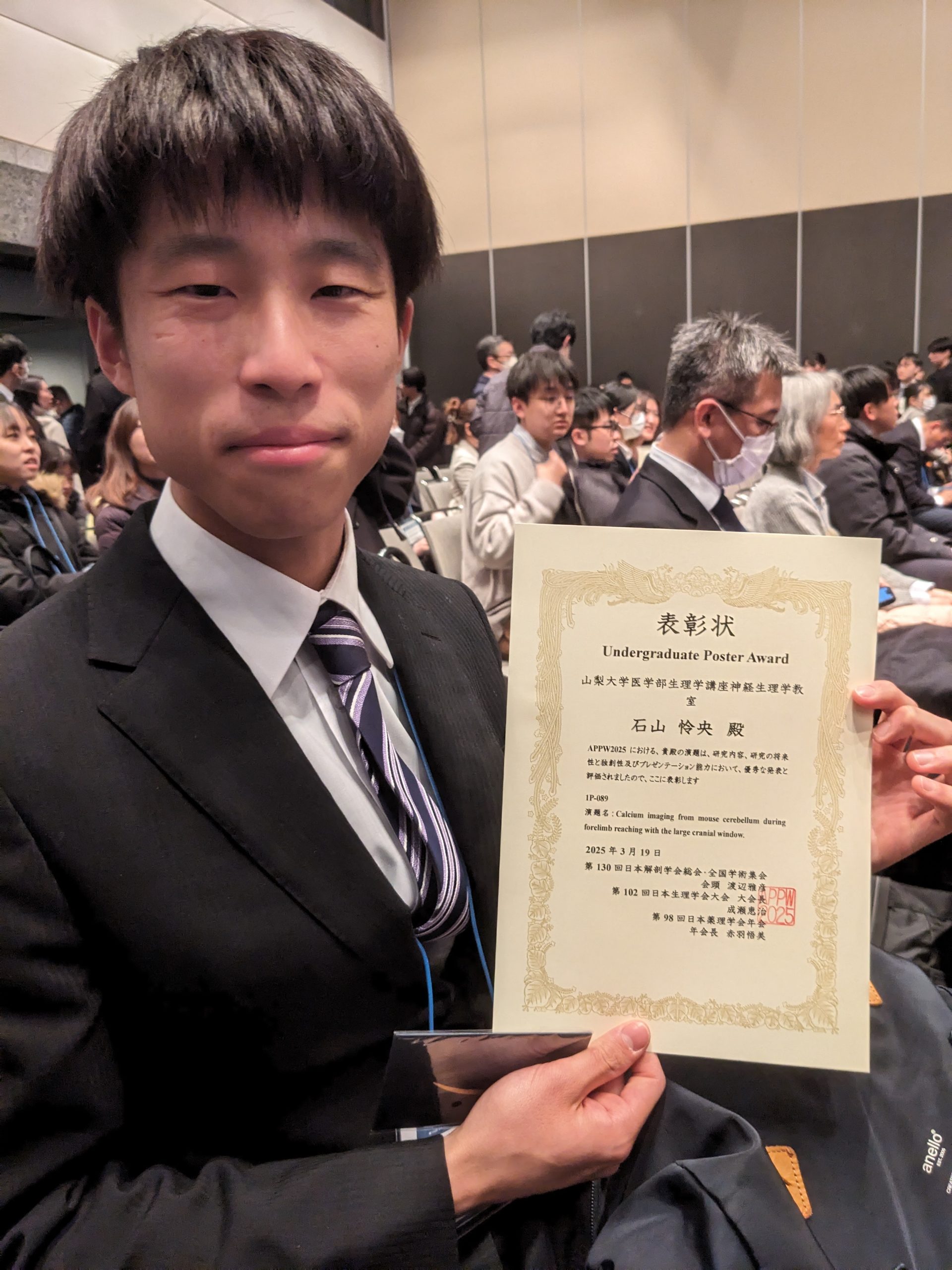幕張で開催されたAPPW2025とその前日に開催された全国リトリートに参加し、ポスター発表をさせていただきました。リトリートも学会も初めての発表であり大変緊張しましたが、学外の方たちとの議論は楽しく、気がついたら発表時間が終了していました。自分だけで考えているときには思いつかないような意見や質問があり、多くの学びを得ることができました。全国リトリートでは学年が近い他校の生徒とも交流することができ、良い刺激となりました。また、APPW2025ではUndergraduate Poster Awardを受賞することができました。
今回、発表に際してご指導、ご協力いただきました、喜多村先生、真仁田先生をはじめ神経生理学講座の皆様、ライフサイエンスコース事務局の皆様にこの場をお借りして感謝申し上げます。
以下が抄録となります。
Reach-to-grasp movement requires precise hand and arm control and is known to be affected by cerebellar activity. However, the detailed neural mechanisms that enable reach-to-grasp movement has not been elucidated. It is necessary to observe cerebellar activity during movement to investigate the relationship between precise movement and neural activity. In this study, we conducted a reach-to-grasp task with mice and observed cerebellar activity during the task using wide-field calcium imaging. To observe cerebellar activity, we expressed a calcium sensor in the cerebellum using an adeno-associated virus and monitored fluorescence changes while training the mice to perform the task. One mouse was trained on the left forelimb for 4 days and two mice were trained on the right forelimb for 10 days in reach-to-grasp movement. Success rate improved in one mouse trained for 10 days. While the mice performed the reach-to-grasp movement, relatively fast responses (39.7 ms from baseline to peak and 125.8 ms from peak to baseline) were observed. Frequency of these fast fluorescence changes (0.26–20.0 Hz, median 1.72 Hz) was close to the firing frequency of Purkinje cell complex spikes(~1-10Hz). The fluorescence changes were classified into three characteristic patterns: 1) an increase at the target presentation, 2) a decrease afterward, and 3) no change. We examined whether there were differences in the cerebellar fluorescence changes between successful and unsuccessful reach-to-grasp movements. We then used a machine learning algorithm to examine whether the fluorescence changes could predict the task outcome. The performance of the model built based on the task outcome outperformed the model created using randomly generated data. Specifically, we found that the difference in fluorescence changes between successful and unsuccessful trials were most pronounced at 3-4 seconds after target presentation, which may reflect variation in reach-to-grasp movements during successful versus unsuccessful trials. In the future, we will quantify mouse behavior and its relationship to cerebellar activity to investigate the underlying causes of the differences in fluorescence changes between successful and unsuccessful trials.


